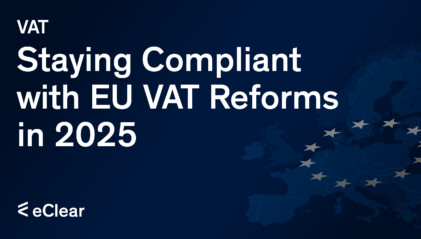Dynamic pricing, also known as surge pricing, has a rich history that extends beyond the digital age. Even in the era of corner shops and local bakers, price adjustments were made ‘dynamically’. For instance, bread was often offered at a lower price in the evening to ensure its sale. This practice of adjusting prices to meet market conditions has been introduced previously. Stationary retailers, for example, have long used red crossed-out price tags for short-term reductions or bait-and-switch offers.
Dynamic pricing is a strategy that has found its place in various industries, including the hotel industry, travel providers, and airlines. These sectors often adjust their prices during peak demand, such as the holiday season or major events, when customers are more willing to pay higher prices. A classic example of dynamic pricing in the retail sector is the sale of ski equipment, which is often offered at significantly lower prices at the beginning of spring compared to pre-Christmas.
Dynamic pricing is not just a theoretical concept; it’s a strategy many merchants and e-commerce companies already implement. According to a Statista survey on the importance of dynamic pricing in stationary retail in 2021, around 47 per cent of all merchants consider this strategy necessary for the future. This sentiment is echoed in the e-commerce sector, where dynamic price adjustment is regarded as a competitive necessity. The study supports’ The Economic Situation in German Interactive Commerce B2C 2015/2016′ by the Federal Association of E-Commerce and Mail Order Germany e.V. (bevh) and Creditreform, which found that about 40 per cent of people use dynamic pricing regularly, often on very short notice. The reason for this widespread adoption is apparent: the internet has made prices more transparent than ever, allowing potential customers to compare offers instantlySurvey on the importance of dynamic pricing in stationary retail in 2021”, around 47 per cent of all merchants stated that they consider the strategy necessary for the future. Many e-commerce companies also consider this dynamic price adjustment to be required in competition. This has already been proven by the study “The Economic Situation in German Interactive Commerce B2C 2015/2016” by the Federal Association of E-Commerce and Mail Order Germany e.V. (bevh) and Creditreform. About 40 per cent of people use the method regularly and often, even on very short notice. The reason is that the internet makes prices more transparent than ever. Today, when potential customers are googling a product, they immediately get results with price offers and can compare them directly.
How does dynamic pricing work in online shops?
Online merchants have their adjusted prices calculated using automatic algorithms. Special software solutions automatically read the competitors’ price data from databases, and price bots collect the data mainly from marketplaces and price comparison sites. The algorithms calculate the optimal price for the merchant based on parameters such as prices of specific competitors, profiles, click numbers, taxes or own costs.
The adjustment results are usually within predefined rules, such as upper or lower price limits. However, some software solutions learn with artificial intelligence and “break” the rule limits. Some merchants use the results as templates for category management, and other merchants have their prices adjusted fully automatically and in real-time by the software. Frequently, mixed forms occur, whereby prices for cheap products with low margins are automated.
Advantages of digital dynamic price adjustment
- Automated adjustment to the market situation in real-time
- Automatically optimised prices
- Higher sales due to more customers, as most customers buy online in a “price-driven” manner
- Higher margins when prices increase, less effort in pricing
What are the different types of dynamic pricing?
Different strategies come into play.
Segmented pricing: Different pricing according to customer target groups. For example, high-income or brand-loyal customers are willing to pay higher prices for more service, and Price-oriented shoppers are shown cheaper offers.
Time-based pricing: Customers accept price premiums for faster delivery or services on weekends or holidays.
Pricing according to exogenous market conditions (external influences): Here, changing competitive prices and indicators such as market shares, commodity prices, inventories, or supply bottlenecks can play a role.
Peak pricing: Higher prices in times of peak demand.
Pricing factor VAT in online distance selling
The latest EU VAT reforms, which have been in force since 1 July 2021, are not just another requirement for dynamic price adjustments. They represent a significant shift in cross-border online trade. The VAT exemption for goods deliveries from third countries with a value of fewer than 22 euros no longer applies. The VAT of the destination country must now be paid for this. The previous delivery thresholds for individual countries also no longer apply. Merchants based in EU countries are already liable to pay turnover tax in all destination countries, supplied from a total EU-wide turnover of 10,000 euros. Even small merchants quickly reach this value.
Consider the delivery of children’s clothing or shoes to Ireland. The VAT in the destination country can significantly impact pricing. In Ireland, these goods are taxed at zero per cent up to a specific size. If the merchant is unaware of this and includes the standard tax rate of 23 per cent in the gross price, he charges the customer too much. And he pays too much to the Irish tax authorities, leading to potential financial losses.
Understanding and correctly applying the correct VAT rates on all their products in the EU-27 is crucial for online merchants. Once correctly assigned, these rates represent an optimal calculation basis for the merchant. To simplify this process, eClear offers a comprehensive VAT database with over 1.2 million tax codes and 300 thousand exceptions for all EU-27 plus the UK through its VATRules.







